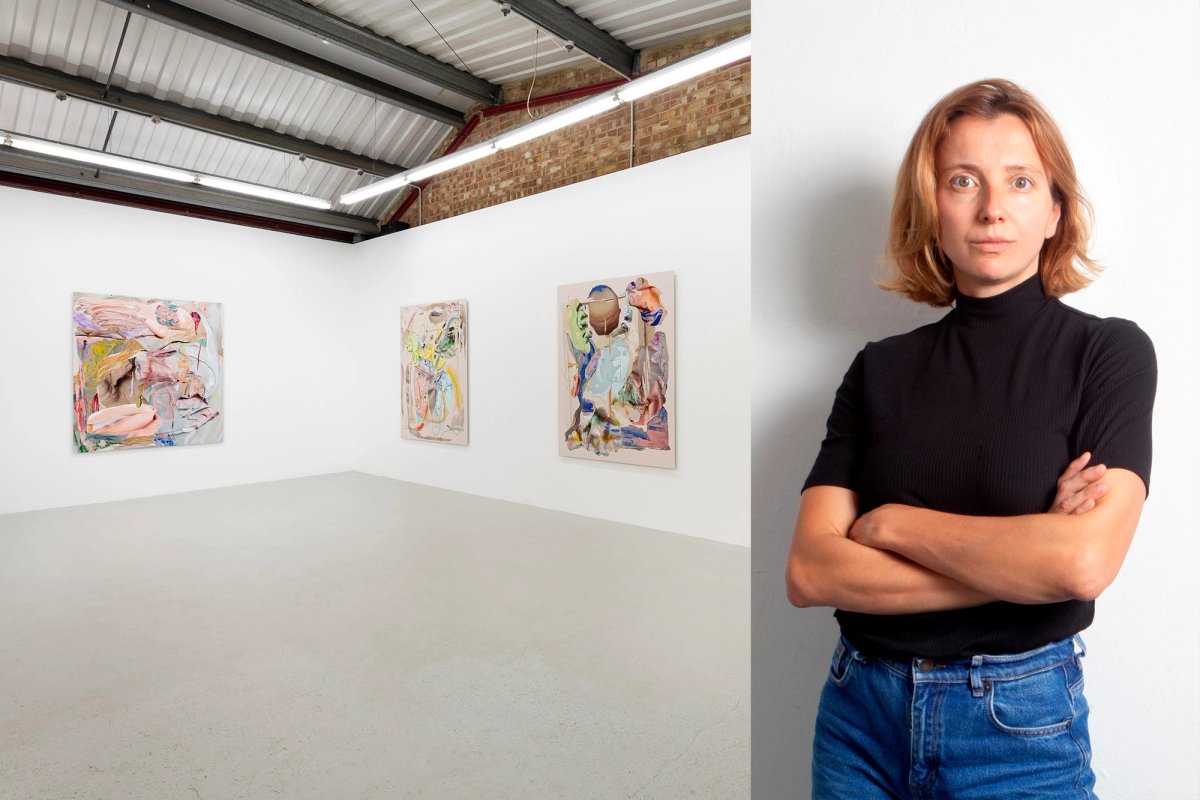Rachel de Joode has always been fascinated by the relationship between the physical and the virtual world. The Berlin-based artist frequently mixes mediums—photography, sculpture, painting—to explore the space between three-dimensional objects and their two-dimensional representations on the screen.
But with coronavirus measures forcing a mass shift to online art over the past eight months, De Joode’s subject matter has taken on new significance. “The theme is something that is not necessarily new, but the temperature has risen during lockdown—it's like a soup, it's boiling, and the flames got higher,” De Joode tells The Art Newspaper.
De Joode’s focus on the interplay between the physical and the virtual is evident in the process behind the abstract paintings currently on show at Soft, her new exhibition at the Annka Kultys Gallery in London. First, De Joode manipulates her canvases—pouring paint, cutting, gluing and layering pigment onto them. She then photographs these canvases and uses computer software to “digitally paint” the images into abstract compositions, which are printed onto large aluminium sheets. The resulting paintings appear textured at a distance but are completely flat on closer inspection.
These paintings, part of De Joode’s Sloppy Therapy series, are a comment on how the human instinct to zoom into art on our phones is changing the way we interact with physical artwork. “Normally you would stand in front of a painting—you see the [whole] painting, and your eye cannot zoom in like you can do on your phone,” she says. “But screens reformulate our art experience. Zooming in is the standard; I constantly zoom in and the wider picture is lost”.
De Joode says that when she views art in person, she sometimes moves closer out of reflex. “Phones are almost a prosthetic for the way we look at art… we now have to move around [artwork] in order to activate the kinds of zooming in and out we could easily accomplish on a screen,” she says.
With galleries and museums shut for much of the pandemic, many people turned to Instagram as their main source of artwork. However, De Joode is sceptical about the app’s ability to introduce people to new and challenging work. “The algorithm is powered by machine learning… the more the Instagram algorithm thinks that I might like a post, the higher it will appear in my feed,” she says. “[It] is curating my ways of seeing art and it will put me in a comfortable, artificial bubble… you’re in an in a sort of algorithm loop that's just your own world.”
But what De Joode finds most interesting about Instagram is its ability to simplify and pacify. She says the app gives people a “false sense of validation”—a belief that the art they are viewing or posting is more popular than it really is. “You’re in a real simulation, you’re watching the party, you feel part of the art world, and you feel that you know what’s happening,” she says. “That’s a good feeling, but it is of course a lie… a rather soothing lie”.


